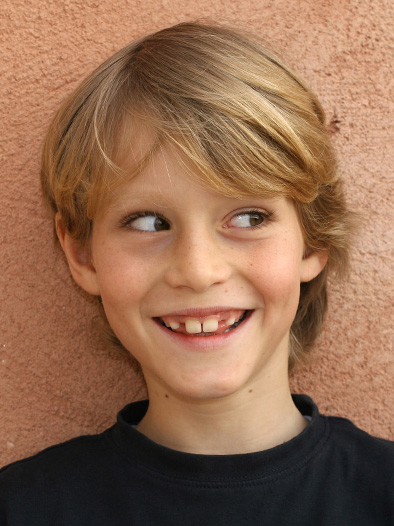Craniofacial Orthodontics – Cleft Lip and Cleft Palate
What is Craniofacial Orthodontics?
Craniofacial orthodontics is a sub-specialty of orthodontics that focuses on the treatment of patients with cleft lip, cleft palate, and other craniofacial anomalies and syndromes. Dr. Casaus will work with a team comprised of speech pathologists, audiologists, ENT physicians, oral surgeons, and craniofacial plastic surgeons in planning treatment to correct cleft lip and palate, as well as other jaw and face abnormalities. As a member of the UNM craniofacial team, Dr. Casaus evaluates tooth and jaw development and growth. She takes care of the non-surgical correction of the teeth and jaws, monitoring growth by means of X-rays and models and using orthodontic appliances to correct misalignment. Dr. Casaus is also responsible for the pre- and post-operative care of patients with craniofacial anomalies requiring surgery to correct their malformations.
What is a Cleft Lip and Palate?
Cleft lip and cleft palate are facial malformations in which the parts of the face that form the upper lip and mouth remain split instead of sealing together before birth. Similar splits can occur in the roof of the mouth, or palate. While the defect occurs in early fetal development, in most cases, the cause is unknown.
While there are certainly aesthetic considerations associated with cleft lip and palate, having this birth defect can affect people in many more serious ways.
- Difficulty Eating – When there is a separation or opening in the palate, food and liquids can pass from the mouth back through the nose while eating and drinking.
- Speech Difficulties – Because the upper lip and palate are not properly formed, it may be difficult for children to speak clearly, and when they do, it may produce a nasal sound. As speech may be hard to understand, a speech pathologist may be used to resolve these issues.
- Ear Infections – Cleft lip and palate can lead to a buildup of fluid in the middle ear, leaving children at a higher risk for ear infections, and if not properly treated, even deafness. To prevent infections, small tubes may be placed in the eardrums to facilitate fluid drainage.
- Dental Problems – Children with cleft lip and palate also often have missing, extra, malformed, or displaced teeth, leading to a higher risk for cavities and other dental and orthodontic issues.
Treatment
The treatment for cleft lip and palate usually involves surgery, and this is where your craniofacial orthodontist and team of specialists come in. Depending on the severity of the case, more than one surgery may be necessary.


